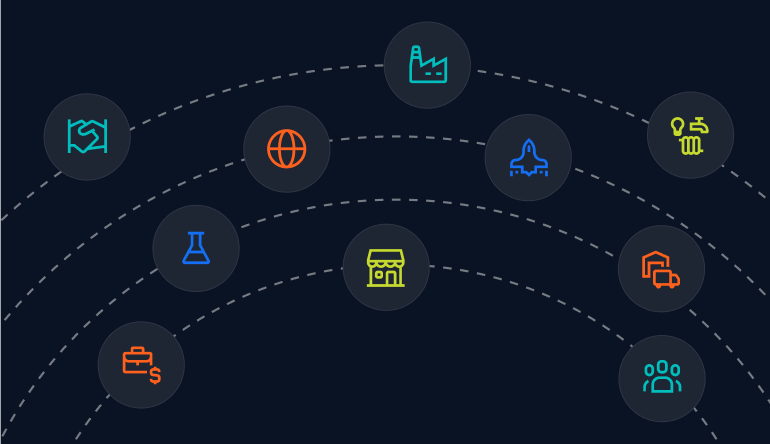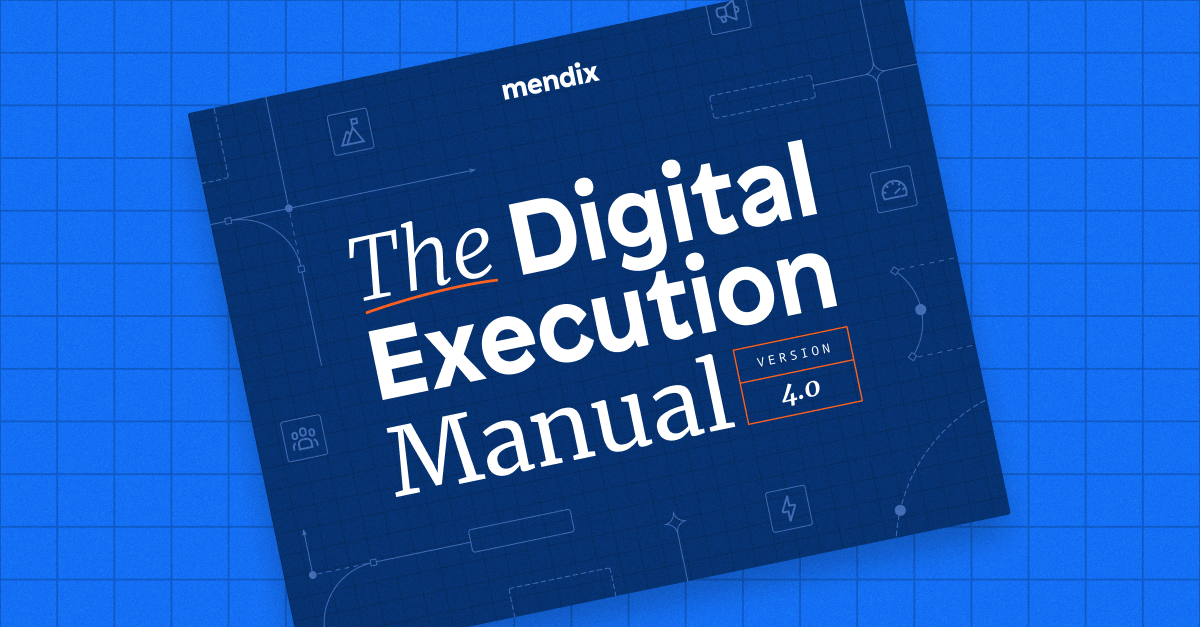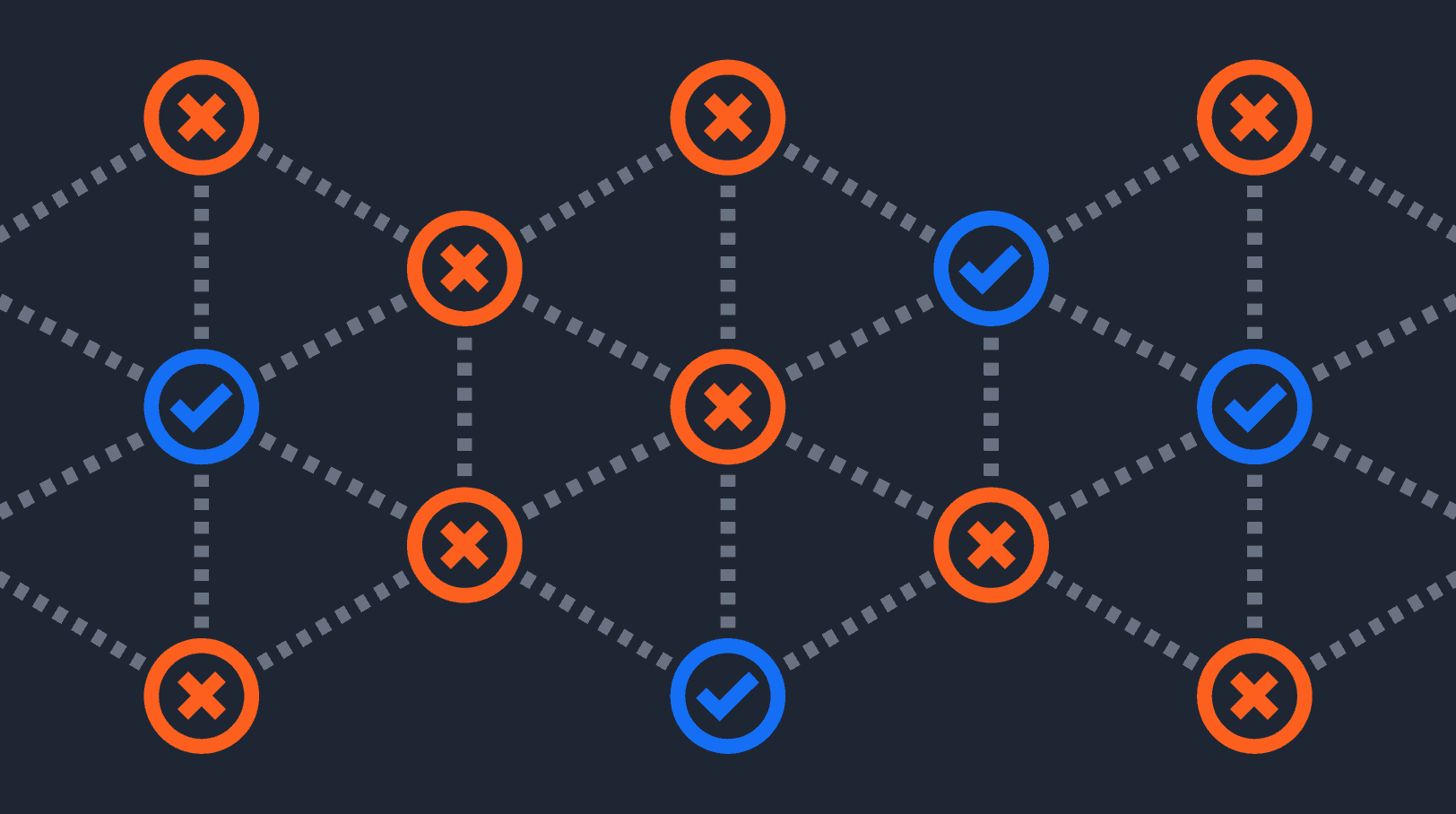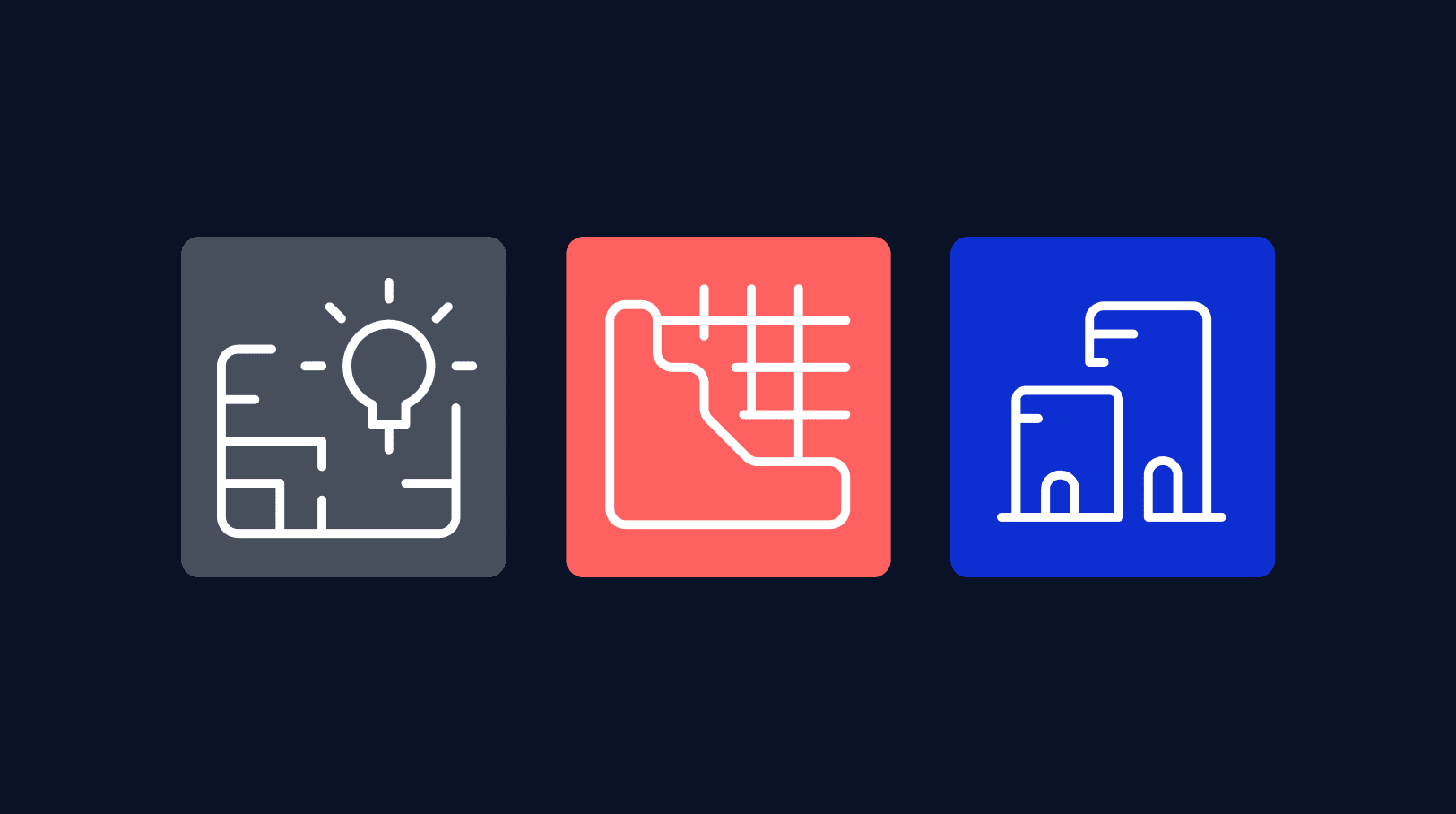We’ve studied hundreds of customers and created a
proven practice to help enterprises achieve their most
ambitious digital transformation goals.
Trusted by

Simplify your digital transformation journey
70% of digital transformations fail. And a recent Mendix survey found that 71% of enterprises say change management is the reason why.
Don’t let the fear of change deter you from more efficiency, minimized costs, and the many other benefits of digital transformation.
Based on years of customer experience and unmatched expertise, we’ve established a proven methodology that makes digital transformation more manageable: The Digital Execution Framework.
71% of enterprises say change management is why digital transformation fails.

Tailor your digital transformation strategy
Every organization is unique, and what works for one business may not be the best route for you. That’s why we believe in a personalized approach to digital transformation.
By assessing all areas of your business, we help you create a tailored digital execution plan. From there, you can establish your vision and use our platform to build, integrate, and deploy new applications and processes that align with your needs.

Where are you in your digital transformation journey?
Segment your digital transformation journey into 3 stages
Take control by breaking up your journey into 3 manageable stages. Mendix provides
the support you need to plan for each step while celebrating success along the way.
-

Start
- Establish your vision and set objectives.
- Bring together a development team.
- Deliver your first Mendix solution.
- Share success to generate internal PR.
-

Structure
- Spread expertise and promote scalability.
- Identify training needs and a sourcing strategy.
- Create a Low-Code Center of Excellence.
- Promote collaboration across the organization.
-

Scale
- Take care of governance.
- Monitor and maintain projects with QA.
- Enable reusability with a private app store.
- Implement Mendix across the enterprise.
Focus on the 5 factors for digital transformation success
Your digital transformation strategy should focus on 5 key areas of
your business. Some areas may need more attention than others.
-
People
Bring the right team together and ensure your people are prepared for change.
-
Process
Continuously deliver high-quality applications with processes that speed up development.
-
Platform
Use a platform that integrates with your tech stack and is primed for future technology trends.
-
Portfolio
Select the right projects to build a portfolio that facilitates quick wins in high-value areas.
-
Promotion
Create a motivating environment by celebrating success and empowering your team.
Built-in tools for transformation
Mendix is the first and only low-code platform with the guidance, structure, and tooling enterprises need to track their digital transformation progress. Available in the Mendix Portal, the features below provide full visibility into all activities happening in the platform.
Use Compass as your guide
Get a tailored onboarding experience to easily organize your team, choose your first application, and start building. Compass structures your digital transformation journey so you always know what to do next.

-

Manage all initiatives
Capture all digital initiatives in one overview for more control over your portfolio.
-

Integrate with ease
Connect Mendix to your existing data sources to make better, data-driven decisions.
-

Work with agility
Work iteratively and deliver value faster with our Agile-influenced platform.
-
Choose your cloud
Deploy fast and on your own terms with our flexible multi-cloud options.
-
Personalize everything
Tailor and enhance all digital customer interactions while capturing feedback.
Support for repeatable success
Whether you prefer a self-service or hands-on approach, we have the people and
resources to guide you through each phase of your digital transformation journey.
Mendix Academy
Explore instructor-led training and our
Developer Certification program.
Expert Services
Get hands-on support and training as you
build your Mendix solutions.
Events
Check our calendar to see us at a meetup,
conference, or event near you.
Mendix Docs
Read technical product documentation and
the latest review notes.
Community
Join the conversation with Mendix experts
and learn from the best.
Customer Support
Reach out to our global team of Mendix
product experts, available 24/7/365.

Leverage our global partner network
Let one of our 300+ partners take the lead. Our partner ecosystem spans every industry and offers deep expertise to get you started and go the distance.
Related resources

Digital Execution Manual
This ebook is the culmination of 17 years of experience helping 1,600+ customers transform their businesses through low-code application development.

How to Unlock Digital Transformation Success Through Promotion
You need your organization—and the people in it—to change in order for your digital transformation journey to succeed.

Why Do 70% of Digital Transformations Fail?
Why do so many digital transformation projects fail? See the main challenges and get tips to ensure success.

What is Successful Digital Transformation?
The problem with digital transformation is that we focus too much on the "digital." Successful transformation requires more than just low-code technology; it requires a practice.

Digital Ecosystems 101: How to Deliver Value & Drive Growth
What is a digital ecosystem? Read how to build an enterprise digital ecosystem, and how it can deliver value and drive growth.

A Digital Transformation Framework: Start, Structure, Scale
To stay competitive, you need more digital frameworks. Follow the three digital transformation phases: Start, Structure, Scale.
- What is digital transformation?
Digital transformation is the strategic, ongoing practice of implementing new technologies and processes across all areas of an organization. Embracing this evolution helps organizations become more flexible, innovative, and efficient.
- What industries benefit the most from digital transformation?
Digital transformation can benefit every industry, but those known for antiquated processes—like automotive, logistics, education, and healthcare—can especially benefit from it.
- How does low-code help with digital transformation?
Low-code platforms are the best way to execute a digital transformation because they offer the flexibility and speed that enterprises need to digitally mature.
With a low-code platform, you can:
- Build new business applications
- Modernize legacy systems
- Create workflows
- Automate processes
- How long does digital transformation typically take?
The time it takes to execute a digital transformation depends on its complexity and scale, as well as your commitment. For example, a global enterprise with 300,000+ employees will take longer to transform digitally than a small company with one location.
Digital transformation is an ongoing practice. Once you have modernized and digitalized your organization, you’ll need to keep up with changing technologies to continually get the full benefits of digital transformation.
 The Low-Code Digital
The Low-Code Digital

